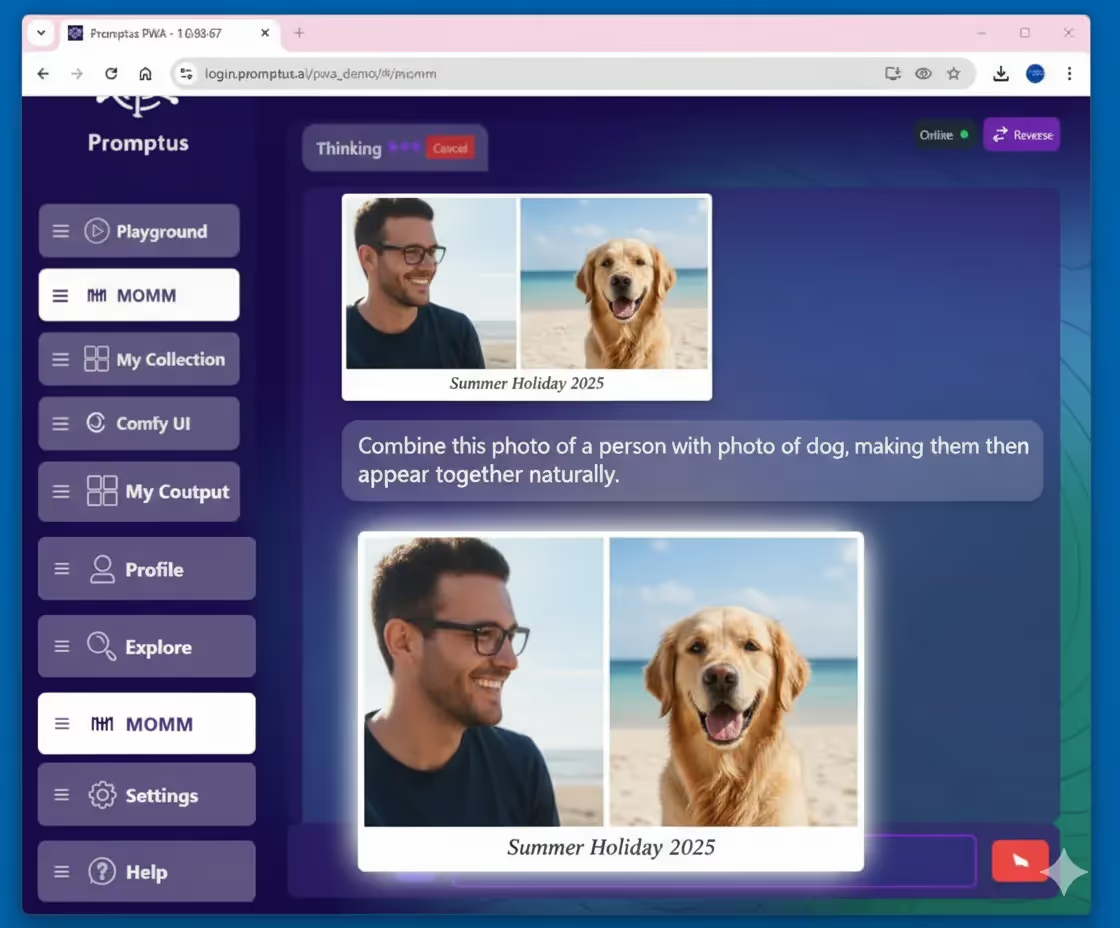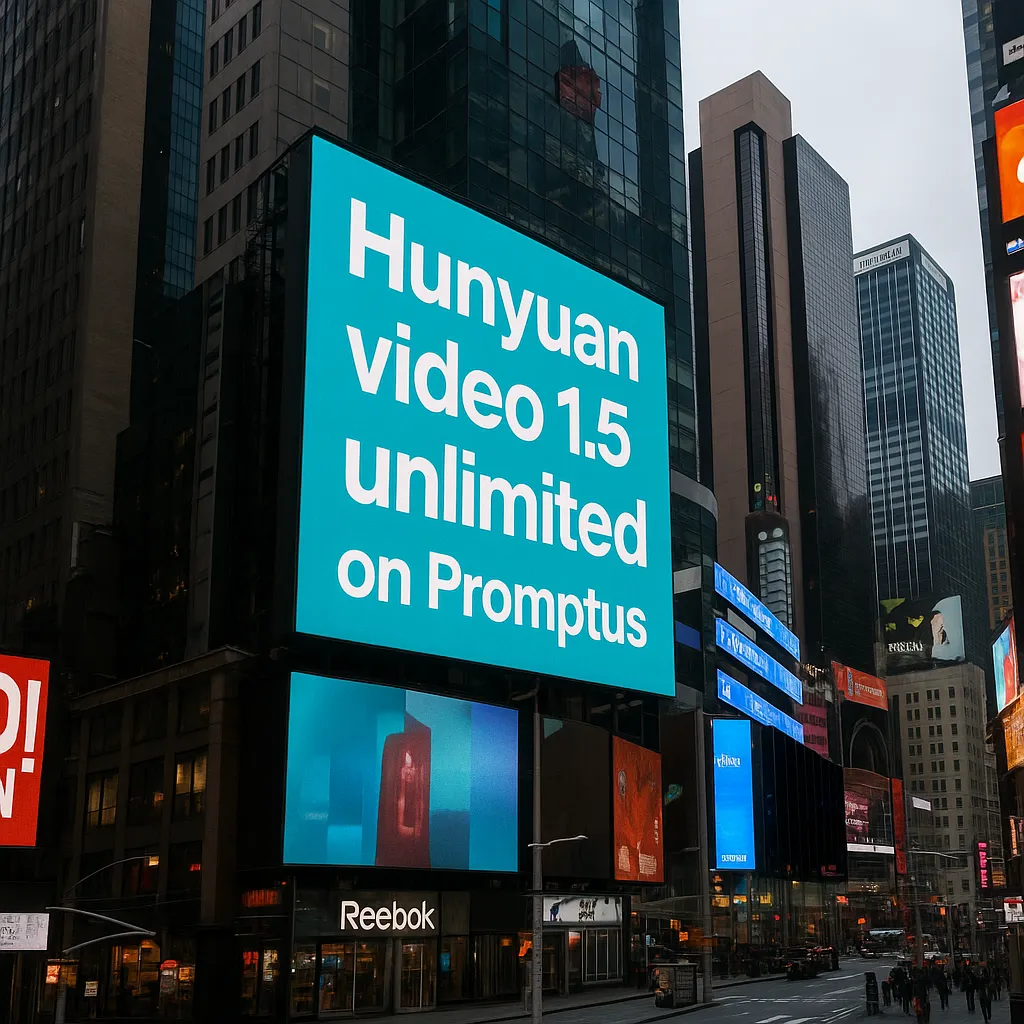
Nano Banana is available through the Gemini app, the Gemini API, Google AI Studio, Vertex AI and Promptus
For years, AI image generators have dazzled us with surreal art, viral memes, and endless “what if” prompts. But they’ve also frustrated creators with inconsistent characters, weird anatomy, and hours of rerolling. Google’s latest release—Gemini 2.5 Flash Image, cheekily nicknamed Nano Banana—might be the moment AI imaging shifts from party trick to power tool.
🎯 What Makes Nano Banana Unique?
Nano Banana isn’t just another text-to-image model. It’s built to solve some of the core pain points that held back earlier AI art tools:
- Multi-image fusion: Blend several photos into one seamless composition. Imagine uploading a sofa, a room photo, and a color palette—Nano Banana creates the perfect décor preview.
- Character consistency: Keep the same person (or dog, or product) looking identical across multiple images. This is gold for storytelling and brand design.
- Natural-language editing: Type “remove the stain,” “blur the background,” or “make it black-and-white”—and Nano Banana performs targeted edits without hours in Photoshop.
- World knowledge & diagrams: From interpreting a classroom sketch to explaining a concept, Nano Banana uses Gemini’s reasoning to go beyond pretty pictures.
- Affordable scale: At $0.039 per image, it’s cheap enough for creators, startups, and agencies to integrate.
- Trustworthy outputs: Every image is marked with SynthID watermarks (both visible and invisible), designed to discourage misuse.
- Proven performance: On the LMArena benchmark, Nano Banana jumped 171 ELO points—a leap testers compared to “a GPT-4 moment for image editing.”
📺 Best Examples (with prompts)
Here are the demos that best show off why Nano Banana is different—along with the exact type of prompt used and what feature it demonstrates:
- Dog + Person Fusion
- Prompt: “Combine this photo of a person with this photo of a dog, making them appear together naturally.”
- Feature: Multi-image fusion. The model blends the two photos seamlessly while keeping both faces intact.
- Object Removal
- Prompt: “Remove the stain on the shirt and blur the background slightly.”
- Feature: Targeted natural-language editing. The model edits only the specified regions, leaving the rest untouched.
- Same Character, New Scenes
- Prompt: “Place this same cartoon-style character into five different settings: a beach, a classroom, a forest, a city street, and a space station.”
- Feature: Character consistency. The subject remains recognizable across all variations.
- Sketch to Answer
- Prompt: Upload a hand-drawn diagram and ask: “Explain this diagram step by step.”
- Feature: World knowledge + diagram understanding. The model interprets the sketch and generates a clear explanation.
- Home Décor Visualization
- Prompt: “Merge this sofa, this room photo, and this blue-and-cream color palette into one design mockup.”
- Feature: Multi-image fusion with design reasoning. The output shows how furniture and color choices fit together in a real space.
These prompts make great show-and-tell moments for a blog, presentation, or video. They’re simple enough for everyday users to understand, but powerful enough to spark that “wow, AI can really do this?” reaction.
🙈 The Not-So-Great Moments
Of course, no AI demo is perfect—and some quirks actually make for entertaining content:
- T-rex Arms: One viewer famously asked, “What is up with that T-rex’s arms?” The model occasionally produces bizarre anatomy.
- Reroll Fatigue: A tester admitted needing to “reroll the prompt a dozen times” just to get one usable image. Reliability is better, but not flawless.
- Hat = Hair Fail: Ambiguous prompts can confuse the model, like when it insisted a hat was actually part of someone’s hair.
- Complex Tools: Inpainting and 3D modes sometimes did nothing, leaving users scratching their heads.
- Hidden Cost: At $0.039 per image, experimentation can add up quickly if you’re iterating dozens of times.
These “fails” are actually great storytelling material—they keep your audience entertained while reinforcing why reliability matters.
🤝 The Big Picture: From Toy to Tool
Nano Banana’s secret weapon isn’t just flashy new tricks. It’s the combination of reliability, versatility, and trust that makes it practical for real workflows:
- E-commerce shops can instantly polish product photos.
- Teachers can turn whiteboard sketches into visual explanations.
- Designers can generate consistent branded content at scale.
- Everyday users can play with pics art-style edits without Photoshop skills.
This is the shift: AI imaging is no longer just for viral posts. With Nano Banana, it’s becoming infrastructure.
🎬 Conclusion
Google isn’t just chasing MidJourney’s aesthetics or DALL·E’s virality. With Gemini 2.5 Flash Image (Nano Banana), it’s building a foundation: reliable, integrated, creative tools that everyday people and businesses can actually use.
Is it perfect? No. You’ll still see T-rex arms and occasional “hat hair” disasters. But the leap forward is undeniable.
Like swapping a party balloon for a Swiss Army Knife, Nano Banana could be the moment AI imaging grows up.
%20(2).avif)
%20transparent.avif)



